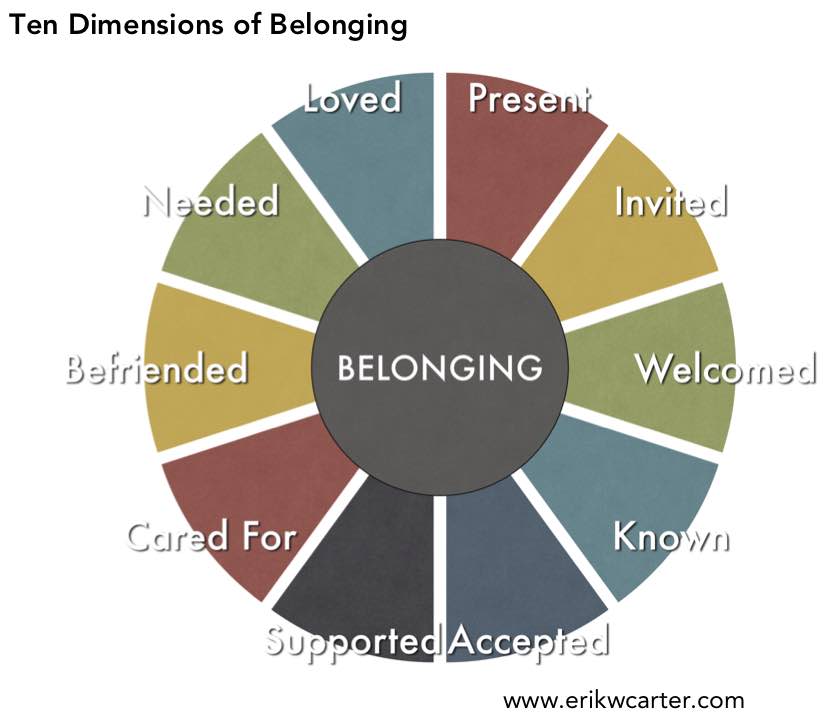
I’ve written about the posture institutions (and individuals) can hold towards people with disabilities (or anyone outside the normative social group): exclusion, tolerance, inclusion, and belonging. I’ve learned about these postures through a number of writers and thinkers, and I wanted to share three resources that have been helpful to me in considering whether I personally am participating in welcoming others, whether I’m allowing the presence of people who are different from me to change who I am (and not just trying to change them to my way of seeing or doing things), and in asking whether the institutions I am a part of are providing ways for a diverse range of people to belong.
- Erik Carter’s Wheel of Belonging. Vanderbilt University Professor Erik Carter offers ten dimensions of belonging for people with disabilities. These start with a simple question: are people with disabilities present? And progress through the question of whether those people are not only present and cared for, but also known and needed.
- Dan Vander Plaats has created Five Stages of attitudes towards people with disabilities: ignorance, pity, care, friendship, and co-laborers. In this short video, he explains the Five Stages. Any community in which people with disabilities are experiencing friendship and co-laboring is probably a community of belonging.
3. I’ve already mentioned what I see as the relationship between questions of belonging for people with disabilities in most institutional spaces. This continuum on becoming an antiracist muticultural institution has been helpful to me in considering similar questions in terms of historically white institutions that hope to become truly diverse communities.
If you haven’t already, please subscribe to my newsletter to receive regular updates and news. You can also follow me on Facebook, Instagram and Twitter.




This Post Has One Comment
Pingback: The Spectrum of Welcome: Moving from Exclusion to Tolerance to Inclusion to Belonging - Amy Julia Becker